| There’s plenty of information and reviews about this lens on the internet as it’s famed for being one of Canons fastest and sharpest L lenses but still reasonably affordable, so this is just a review specifically from my experiences with it. Before I got it, I did think about the Canon 100-400mm f5.6 lens but after research and taking into accounts my own experiences I decided against it. There are two clear advantages the 100-400mm has over the prime 400mm – the zoom and Image Stabilizing. The reasons I still chose the prime lens was although the zoom would give it extra versatility I figured I would never have enough reach in photographing wildlife which has proved to be correct. There has only been a few times when I have been too close to my subject although it would have been especially useful on my trips to the Farne Islands photographing Puffins. Image Stabilizing would undoubtedly be a great advantage but I felt the advantages ultimately out weighed that and they were the slight advantages in weight, focusing speed and most of all, its ability to take a converter with little image quality loss. |
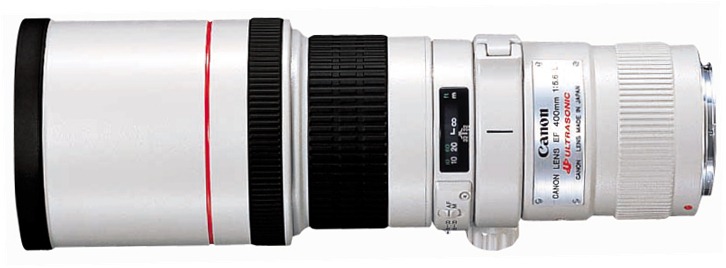 |
Image QualityThis is what the lens is famed for and when I got it it, it raised my expectations for image quality, as it was far better than any lens I had previously owned. Where I live is not exactly the sunshine capital of Europe, for most of the year it is dull which means boosting the ISO and using the lens wide open. Quality in boosting the ISO will depend on the camera but for being wide open, I use it most of the time and the images are sharp. The amount of times I’ve heard this is a lens you can only use in bright conditions or with a tripod – I have never used it on a tripod, instead relying on occasionally a monopod but mostly hand holding techniques and whatever support that might be around me. The image below was shot at sunrise in the middle of winter using nothing more than resting the lens between my knees whilst sitting down with my back to a tree. It’s taken well below recommended shutter speed and pushing the camera and lens to the maximum. The biggest problem came from the deer's movement and image quality at ISO 3200. |
|
Roe Deer at dawn in Winter - 1/100 sec f/5.6 ISO 3200 Canon EOS 30D |
| The Fox below is from the opposite conditions from above, taken in summer in bright sunlight but still wide open at f5.6. Another reason I shoot wide open is to keep the background out of focus as much as possible which helps make the subject stand out. Because I’m confident of the sharpness, I make sure I get as fast as possible shutter speed to prevent blur from movement. |
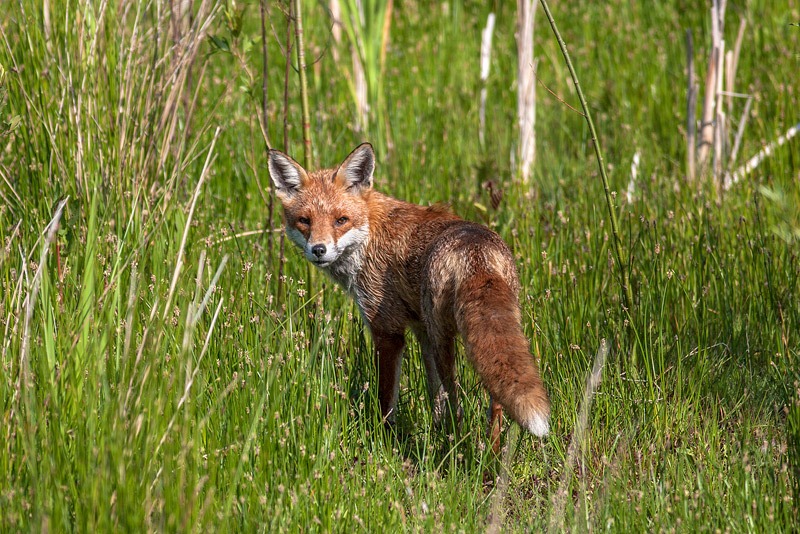 Fox late morning in Summer- 1/1000 sec f/5.6 ISO 100 Canon EOS 30D |
| The Kingfisher below is another example of a low light shot though slightly better conditions than the deer. Taken during the day but dull and wet conditions, supported but still without a tripod. |
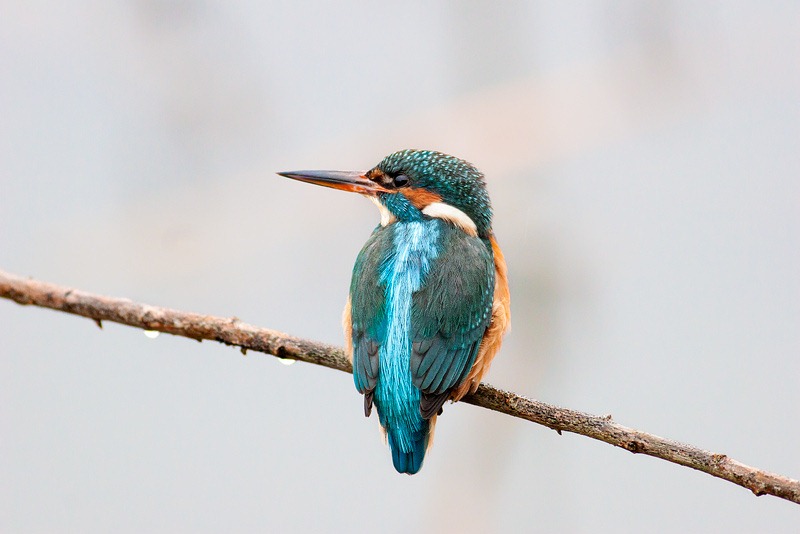 Kingfisher - 1/200 sec f/5.6 ISO 400 Canon EOS 30D |
| The Rabbit image shows an unsharpened photograph taken wide open at f5.6 with a 100% crop below that. I did do a comparison with the Sigma 500mm f4.5 lens showing a more detailed account of this lens at different apertures. Sigma 500mm f4.5 Review |
 1/250 sec f/5.6 ISO 200 Canon EOS 30D |
| Unsharpened image taken wide open with 100% crop below |
 |
| Stopping down the lens of course improves image quality but to be honest I rarely bother, even with the opportunity as there isn’t a massively, noticeably difference in quality – not in real picture quality – you have to start pixel peep to see it. |
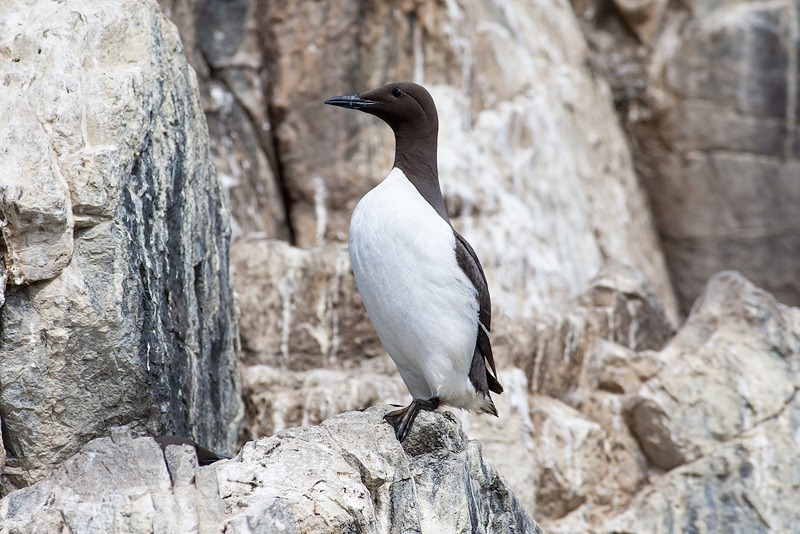 Guillemot - 1/2000 sec f/8 ISO 400 Canon EOS-1D Mark III |
Birds in FlightI’m no expert at photographing birds in flight, looking on the internet there are some very good ones around such as Jody Melanson who also uses this lens. Most of my experiences come from visiting the Farne Islands where this lens is perfect. It’s light, fast focusing, easy to carry so photographing the fast moving Puffins as they fly in all directions overhead comes more down to skill, technique and the cameras ability to focus. This is one time I do try and stop down if conditions allow as the extra depth of field helps improve the chances of the bird being in focus. |
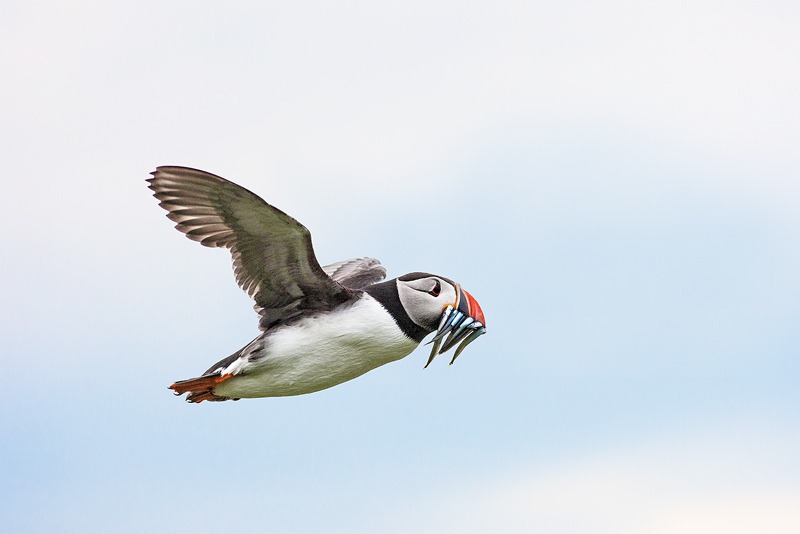 Puffin - 1/4000 sec f/7.1 ISO 400 Canon EOS-1D Mark III |
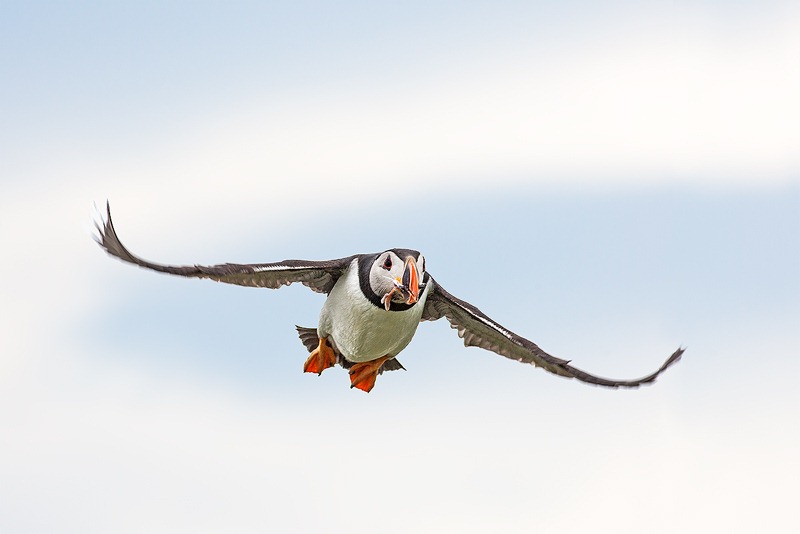 Puffin - 1/1250 sec f/7.1 ISO 400 Canon EOS-1D Mark III |
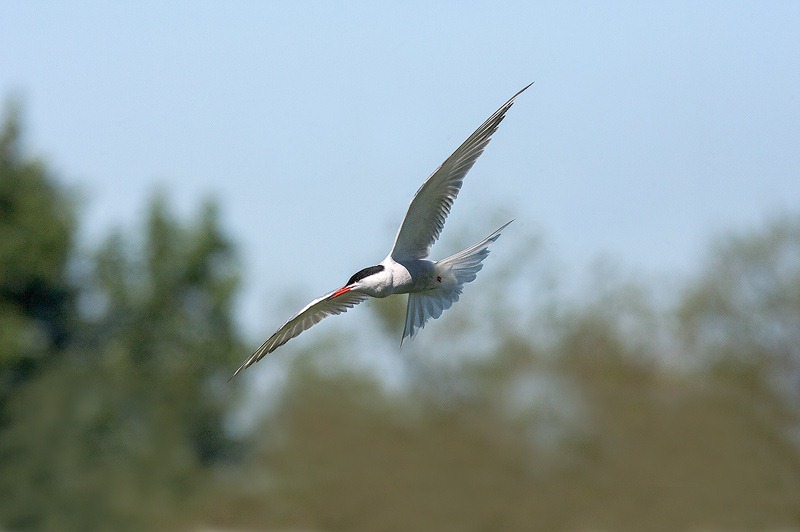 Tern - 1/6400 sec f/8 ISO 800 Canon EOS-1D Mark II N |
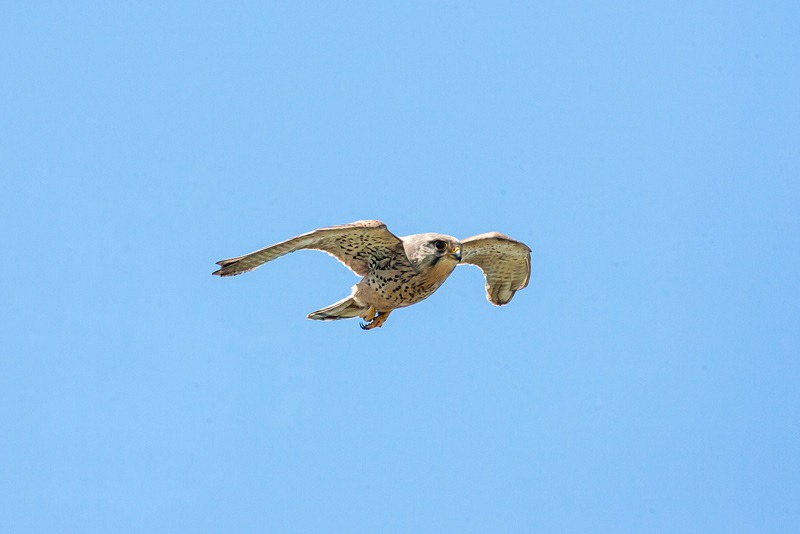 Kestrel - 1/1600 sec f/6.3 ISO 400 Canon EOS-1D Mark II N |
With a x1.4 teleconverter (Kenko Pro 300)As with most of the Canon L lens line up it takes little of a hit in quality with a converter on, at least not with the Kenko Pro 300 which is the one I’ve been using. Of course it does slow down a bit and without a pro body you need to tape the converters pins to retain autofocus and with a maximum f5.6 you’re down to f8 which does limit it in dull conditions, but if I can get a fast enough shutter speed I’m not particularly concerned about the image quality with the converter on and every bit of reach helps. |
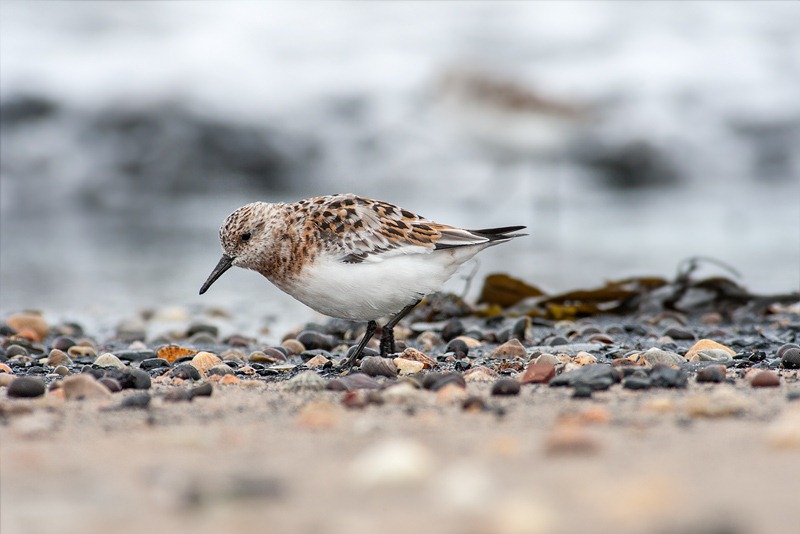 Sanderling - 1/1000 sec f/8 ISO 800 Canon EOS-1D Mark III + x1.4 teleconverter |
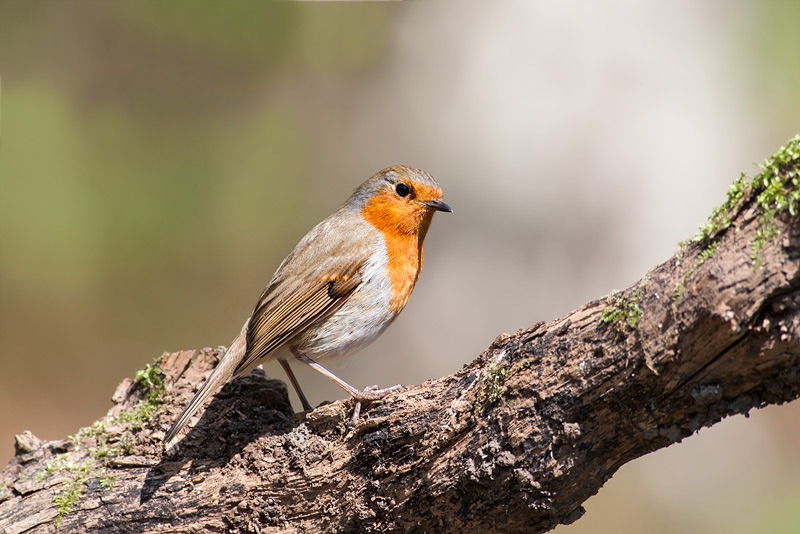 Robin - 1/500 sec f/9 ISO 800 Canon EOS-1D Mark III + x1.4 teleconverter |
General useMaybe being accustomed to using a bigger 500mm lens, this lens seems light but I do feel that it is very portable and have hiked around with it for a day without any feeling of it being too heavy. I usually carry it around in a Lowpro 300 AW backpack where it can remain attached to the camera or even with the converter on. It can also be comfortably slung over your shoulder attached to the camera like any other lens so it is ready for quick use. I used to have a protective filter attached to the front but found this reduced the image quality noticeably, however, the built in lens hood extends out enough to prevent any likely damage that a filter would otherwise prevent.
Negatives?The only real ones I can think of are the obvious ones – lack of an image stabilizer and the f5.6, however without these the lens would probably be double the price though I can’t help thinking what an amazing lens Canon would have if it did at least have the IS. There is always the 100-400mm f5.6 with the IS on for those who really need it which is around the same price, but for reasons I explained at the beginning, this lens has its own distinct advantages.
ConclusionGetting this lens when I did had a massively positive impact on my wildlife photography. Although there seems that there is never enough reach this did get me closer to the subject especially combined with the converter. The next long lens for wildlife up from this is costs thousands more so it’s a good compromise between affordability from those and quality from the Sigma and Tamron zooms which are a bit cheaper.
On the webI’ve put together a few useful links to users of this lens either past or present. |
Subscribe to:
Posts (Atom)
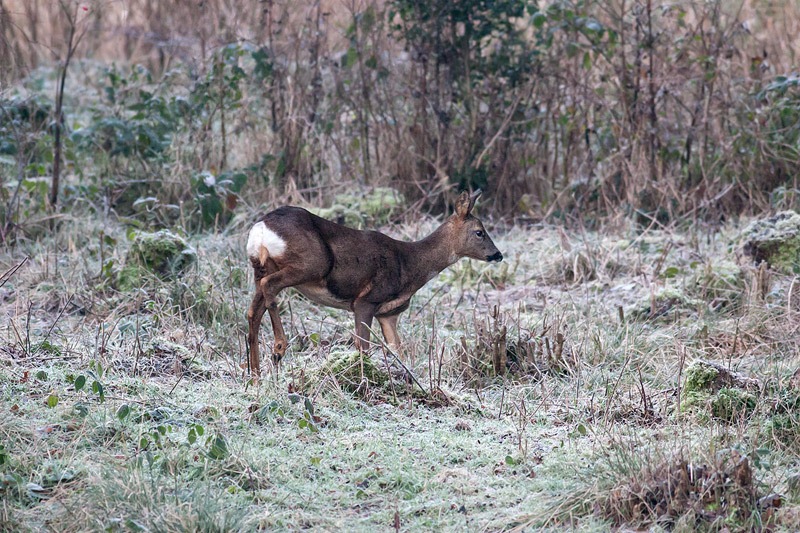





great photo, awesome
ReplyDeletethank you :)
This is a great review with outstanding examples of your work. Thanks!
ReplyDeleteThis is a great review I am thinking of purchasing a 400mm F5.6, could you recommend a backpack which i can fit both lens and camera connected in is the Lowepro 300AW any good and any others.
ReplyDeleteFor some time when the 400 mm was my main lens, I used the Lowpro 300 AW, or at least an earlier version and it, which comfortably fitted the lens and camera together. It's a great walk around bag as you can also fit in food or even a light weight jacket. However, since getting the Tamrac Expedition 7x for my 500 mm lens, I find this make much more comfortable to have on my back and would recommend the smaller version (6x?) that would fit the 400 mm. I've been planning on getting one myself someday. One thing that might be important to you. The Lowpro I had, had a rain cover built into it which has certainly been very useful when using it as a day out bag. I'm not sure how 'water proof' the Tamracs are.
ReplyDeleteBought this lens today after your review , love it ! So sharp ! Birds in flight from 100meter and I can count the fethers in Lightroom !
ReplyDelete10 Years on and some of my favorite images were taken with this lens and it's still going strong. Hope you get the same enjoyment out of it as I have.
ReplyDelete